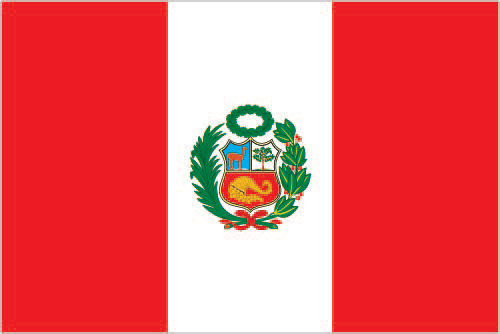
Peru's economy reflects its varied topography - an arid lowland coastal region, the central high sierra of the Andes, the dense forest of the Amazon, with tropical lands bordering Colombia and Brazil. A wide range of important mineral resources are found in the mountainous and coastal areas, and Peru's coastal waters provide excellent fishing grounds. Peru is the world's second largest producer of silver and third largest producer of copper. The Peruvian economy has been growing by an average of 5.6% for the past five years with a stable exchange rate and low inflation, which in 2013 was just below the upper limit of the Central Bank target range of 1 to 3%. For the last three years, this growth was due partly to high international prices for Peru's metals and minerals exports, which account for almost 60% of the country's total exports. Despite Peru's strong macroeconomic performance, dependence on minerals and metals exports and imported foodstuffs makes the economy vulnerable to fluctuations in world prices. Peru's rapid expansion coupled with cash transfers and other programs have helped to reduce the national poverty rate by 28 percentage points since 2002, but inequality persists and continues to pose a challenge for the Ollanta HUMALA administration, which has championed a policy of social inclusion and a more equitable distribution of income. Poor infrastructure hinders the spread of growth to Peru's non-coastal areas. Peru's free trade policy has continued under the HUMALA administration; since 2006, Peru has signed trade deals with the US, Canada, Singapore, China, Korea, Mexico, Japan, the EU, the European Free Trade Association, Chile, Thailand, Costa Rica, Panama, Venezuela, concluded negotiations with Guatemala, and begun trade talks with Honduras and El Salvador, Turkey and the Trans-Pacific Partnership. Peru also has signed a trade pact with Chile, Colombia, and Mexico, called the Pacific Alliance, that rivals Mercosur. Since the US-Peru Trade Promotion Agreement entered into force in February 2009, total trade between Peru and the United States has doubled. Although Peru has continued to attract foreign investment, political activism and protests are hampering development of some projects related to natural resource extraction.
$344 billion (2013 est.)
country comparison to the world: 40
$327.3 billion (2012 est.)
$308 billion (2011 est.)
5.1% (2013 est.)
country comparison to the world: 54
6.3% (2012 est.)
6.9% (2011 est.)
$11,100 (2013 est.)
country comparison to the world: 112
$10,700 (2012 est.)
$10,300 (2011 est.)
agriculture: 6.2%
industry: 37.5%
services: 56.3% (2013 est.)
25.8% (2012 est.)
2.9% (2013 est.)
country comparison to the world: 111
3.4% (2011 est.)
16.16 million
country comparison to the world: 38
note: individuals older than 14 years of age (2012 est.)
agriculture: 25.8%
industry: 17.4%
services: 56.8% (2011)
3.6% (2012 est.)
country comparison to the world: 29 3.9% (2011 est.)
mining and refining of minerals; steel, metal fabrication; petroleum extraction and refining, natural gas and natural gas liquefaction; fishing and fish processing, cement, glass, textiles, clothing, food processing, beer, soft drinks, rubber, machinery,
5% (2013 est.)
country comparison to the world: 58